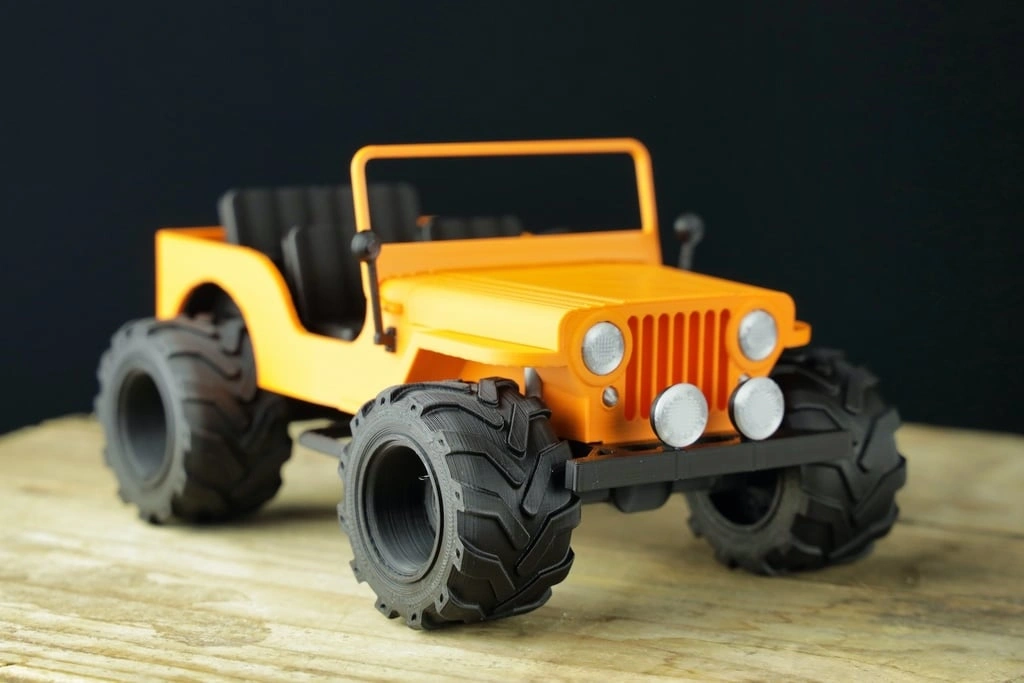Ultimate Guide for Wood PLA Filament
Aug 04,2023 | 3D4Create
I. Introduction
Wood PLA is one of the most popular and versatile filaments for FDM 3D printing. It allows incorporating stunning lifelike wood aesthetics into 3D printed parts and projects.
Generally, wood PLA filament contains recycled wood pulp or sawdust as a filler material blended with PLA plastic. This provides the appearance, texture and even scent of natural wood while retaining the excellent printability of standard PLA.
This handy guide will explore wood PLA properties, printing tips, post-processing techniques, top uses and frequently asked questions.

iSANMATE Wood PLA Filament 1.75mm 1KG
II. Overview of Wood PLA Filaments
Here are the core properties and composition of wood PLA filaments:
- Part wood, part PLA – Most wood filamet consists of about 60-70% PLA plastic polymer and 40-30% wood fibres. The PLA provides printability while the wood adds realistic aesthetics.
- Looks and feels like wood – Wood particles provide visible grain patterns with a natural feel, unlike plain plastics.
- Environmentally friendly – Uses recycled wood waste products like sawdust as filler.
- Available in different wood types – Oak, pine, ebony, bamboo and more to match different lumber.
- Easy printing at low temps – Prints like regular PLA at 190-220℃ with excellent adhesion.
- Excellent thermal stability and durability - Acid/alkali resistant, low temperature and UV resistant, waterproof and insect/termite proof.
- Smooth and textured appearance - Wood-plastic composite particles create attractive surface finish.
- Recyclable and reusable - New eco-friendly high-tech printing material.
Wood PLA combines the ease of use of regular PLA with gorgeous wood-like aesthetics unmatched by other filaments.
III. Recommended Print Settings for Wood PLA:
The following settings provide a reference, but you need to start experimenting on your own printer:
- Nozzle temperature 190-220℃ – Heat just high enough to adequately melt the filament.
- Bed temperature 45-60℃ – Helps adhesion like PLA, but can go a bit lower.
- Slow print speed 40-50mm/s – Take it slow to prevent possible clogging from the wood particles.
- Layer height 0.25mm – Helps the wood fibers flow through the nozzle smoothly.
- Different retraction settings based on the extruder type – Bowden extruders need more retraction (5.5mm at 40mm/s) while direct extruders need less (1.3mm at 25mm/s).
- Minimal cooling fan, if needed – Wood PLA adheres very well, reducing cooling needs.
- Use a (hardened) steel nozzle or a Ruby nozzle for abrasion resistance
- Retract filament from the hot end after printing to prevent heat degradation and clogging in the next print.
The wood particles make wood PLA a little more viscous, so printing slower produces the best results. Adhesion is great with just a lightly heated bed.
IV. Post-Print Finishing of Wood PLA Models
To make wood PLA prints look even more like finished wood products, some post-print finishing can enhance the aesthetic:
- Sanding - Lightly sand to smooth layer ridges and enhance wood grain.
- Staining - Use wood stains to tint the print different hues and bring out depth.
- Painting – Acrylic craft paints also apply nicely for added color.
- Clear coating - Seal with polyurethane or epoxy resin for glossy, protected finish.
- Waxing - Rubbing wax adds sheen and waterproofing.

Post-print finishing wood PLA model (photo: Matterhackers)
V. Top Uses for Wood PLA Filament
The realistic wood appearance and feel of wood PLA makes it perfect for:
- Decor items – Vases, lamps, pen holders, plant pots printed with wood filament match home décor beautifully.
- Wooden cosplay props – Make realistic props and accessories for wood-themed costumes.
- Rustic jewelry – Wooden pendants, earrings and necklaces with a natural style.
- Geometric prints – Wood cubes, polyhedra and other mathematical shapes look striking.
- Figurines – Miniature characters and figurines take on a woodsy feel.
- Costume armor – Bold and unique-looking wooden helmets, shields and armor pieces.

Elephants printed with wood PLA (photo: 3dwithus)
VI. Conclusion
Wood PLA filament opens up limitless options for 3D printing projects with natural wood aesthetics, from lamps to furniture to cosplay weapons. With mostly standard PLA print settings and some light finishing, you can easily achieve stunning wooden prints with unique wood grain patterns.
Give your next creation an organic feel with wood PLA! Once you try this versatile material and master the techniques, you may never go back to plain plastics. Have you used wood PLA for any cool prints? Share your experiences with this filament in the comments below!
FAQS:
Q1: Is it made from real wood?
A1: Yes, recycled wood pulp and sawdust particles provide the color, grain and texture.
Q2: Does it smell like wood when printing?
A2: It has a subtle wood smell during printing due to the lignin in the wood fibers.
Q3: Is wood PLA food safe?
A3: Not certified food safe – the wood content makes it more porous than standard PLA.
Q4. Does it wear down brass nozzles faster?
A4: Slightly faster than regular PLA due to wood particles, but not as fast as composites with mineral additives. Use a steel nozzle for longest life.
See Also:
All You Need To Know About Rainbow PLA Filament
All You Need To Know: Silk Filament for 3D Printer
Optimize Your PLA Prints: Settings and Tips for Better Quality


